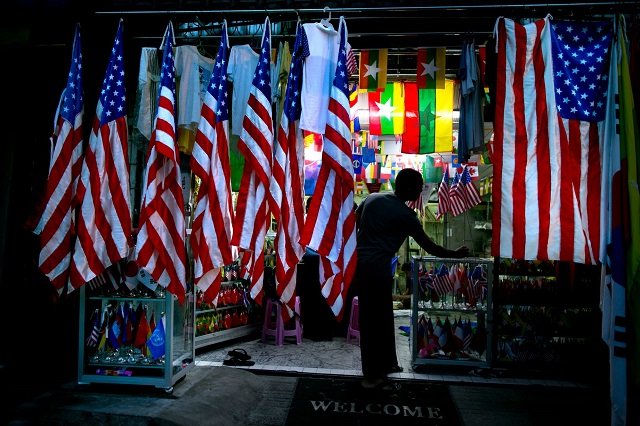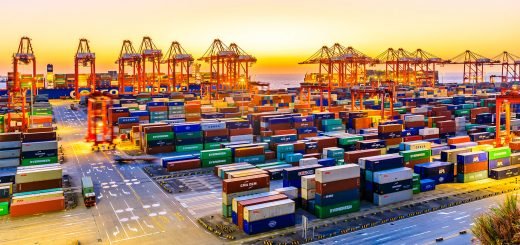Geopolitics of Myanmar: Is it the center of the US-China conflict in the 21st century?

Myanmar is rising hot again today in the core of geopolitics.
In the 1st, Myanmar’s military conducted a coup against the civil government. It is the moment when Myanmar’s democracy, which had been confined to Aung San Suu Kyi, a symbol of Myanmar’s democratization, and proceeded to be a close coexistence with the military, is in vain. The police are using water cannons to crackdown on anti-coup protesters made up of people, proclaiming martial law and banning traffic and assembly at night. Consequently, there is a rising fear that casualties may result from a conflict between the police and protesters. The international community is also keeping the voice condemning the coup. The US administration expressed its support for the peaceful protests of Myanmar against the coup. There is a rising prospect that the crisis in Myanmar will be the first testbed of US President Joe Biden’s Asian policy.
Competition among the powers in Southeast Asia is still ongoing, including the US’s “Pivot to Asia”, China’s “Belt and Road Initiative”, Japan’s “Asian Connectivity Initiative,” and South Korea’s “New Southern Policy.” The Southeast Asia region is home to an abundance of natural resources, a low cost, and a young workforce, a potential consumer base, and important partner countries with geographical advantages close to China, Japan, and Korea.
In particular, Myanmar, which is located on a path of geopolitical importance, is bordered by Bangladesh to the northwest and China to the northeast. It faces India in the east, between Thailand and Laos, and the Gulf of Bengal in the west. Myanmar is located in the midriff of the two major Asian countries, China and India, and can be depicted as a strategic point connecting the Pacific Ocean and the Indian Ocean. Appearing only at historical cases and various examples around the world, it can be determined that the expression ‘geopolitical value’ has both certain strengths and blind spots. ‘Geopolitical value’ has the advantage of achieving a balance and securing the interests of the country if the positional advantage is well utilized. At the same time, however, it also means that it can be turned into an arsenal through battles for hegemony among the great powers who want to expand their influence at this point. To tell the truth, geopolitically important locations where the examples of the Balkans, gunpowder in Europe, or the Korean Peninsula, the last Cold War region of the Earth, clearly show that “geopolitical value” is not at all easy to managing fate.
China, Pauk Phaw Relations and Base for Advancement to the Ocean
China and Myanmar are neighboring cousins across the borderline. At the same time, Myanmar’s “new military period”, which began in 1988, has been further strengthened through the full support of China, amid the sanctions of the international community centered on the United States. Since the 1980s, Myanmar’s economy has depended on China, and the kinship between the two countries, which has grown closer, has developed into the only cousin (PaukPhaw) relationship and strategic partnership.

Myanmar is also a very significant partner for China. China’s need for Myanmar and its strategy can be rendered in various aspects. Foremost, Myanmar became one of the pillars of China’s energy security strategy. In case of emergency, China transported gas and crude oil to its country without passing through the Strait of Malacca, through Myanmar. China has also secured the Malacca Strait bypass for petroleum oil imported from the Middle East and Africa through the construction of natural gas and crude oil pipelines such as Kyaukpyu – Kunming. For China, which is a representative continental force, Myanmar is an important foundation for the “Southward policy” that can directly arrive at the Indian Ocean. Myanmar is the departing point of China’s southern policy to elevate into the sea while keeping India in check by linking Myanmar Kyaukpyu-Bangladesh Chittagong-Sri Lanka Hambantota-Pakistan Gwadar. Additionally, China will secure access to Myanmar and Kyaukpyu deep sea ports and prepare a special economic zone (Kayukphyu SEZ) exclusively for Chinese enterprises. What is more, China is building highways and high-speed railways along pipelines in Myanmar, securing roadways that are significant for progressing into the ocean, and is accelerating China’s Belt and Road Initiative (BRI) project. Likewise, through close cooperation with Myanmar, China is also reaping the effects such as inducing pro-Chinaization in Southeast Asia, accelerating the internationalization of the Renminbi, and restraining India.
Since the inauguration of the civil government in Myanmar, the relationship between China and Myanmar seems to be different from the former military period, but the cooperation still has continued, centered on Pauk Phaw.

America, Democracy and Asia to Pivot
The improvement of relations between the United States and Myanmar was initiated in the US Asian-centered policy in 2011. The Washington led Myanmar to improved relations with Western countries such as Europe and Japan. This drew to ease of EU economic sanctions and Japan’s large-scale investment. As the competition for hegemony between the US and China intensified, the US promoted pro-Westernization through support for democratization with Aung San Suu Kyi. The United States sought to depict a new map of Asia that seeks to hold China’s forces in the South China Sea by enhancing relations with Myanmar and to press China to expand its powers into the Indian Ocean by strengthening military cooperation with Myanmar, Thailand and Vietnam.
Nonetheless, the full recovery of the two countries relation has been expected to take considerable time. Sanctions against Myanmar are complex, and the issue of repression of minority ethnic groups, including the Rohingya, shows no signs of being easily resolved amid criticism from the international community.
When it comes to the military coup, Biden denounced “a direct attack on the transition to democracy and the dominion of law” and warned of immediate action through sanctions. Even so, this is why the Myanmar crisis is recognized as President, Joe Biden’s first test of putting human rights first in US foreign policy. This is because, contrary to the strong warnings that the Biden administration has come forth in succession to the armed forces, it is questionable whether it will be able to practically put strong pressure on Myanmar. This is because if the pressure on Myanmar grows stronger, Myanmar’s dependence on China will increase. This could disrupt the Biden administration’s plans to establish a new front against China in the Asia-Pacific by uniting the forces of alliances besieging and oppressing China.

Myanmar between the US and China
From a strategic point of view, Myanmar is at a collision point where the interests of the United States, which are trying to hinder China’s expansion in Asia, and China’s interests in trying to enter the ocean. Moreover, the US’ attempt to expand its influence in Asia again through the Biden administration’s Asia-Pacific policy, which is in line with the Obama administration, is a great challenge for China, which has exerted a near monopoly over Myanmar. Consequently, the conflict between China and the US in Myanmar was expected to be aggressively opposed.
Afterward the military coup the international community, centered on the Washington, is publishing a substantial statement, and the Biden administration is responding quickly to the restoration of Myanmar’s democracy. While the United States has indicated that the Washington will pressure Myanmar through strong sanctions, the Biden administration seems to have to get a decision between checks against China and restoration of democracy. Washington is very cautious as it is expected that Myanmar will be closer to China if Western societies impose strong sanctions on Myanmar. Beijing is acquiring a very cautious approach and continues to be non-interference with the political problem in other countries.
Myanmar is also well aware of the strengths of China and the US and the strategic and economic values of its own state, so it is using strategies to attain the most of them. Aung San Suu Kyi also pointed out that “Myanmar is sandwiched between the most powerful US and China” (The Nations, 27 February 2012), suggesting that they are finding out the condition of Myanmar accurately.
Through infrastructure investment and cooperation in ASEAN nations, China has intensified ASEAN countries’ dependence on China. This has increased the influence of the Chinese yuan in Southeast Asian countries. Beijing, which desires to challenge the US dollar hegemony through AIIB(Asian Infrastructure Investment Bank), is beefing up the yuan hegemony in Southeast Asia to internationalize the yuan. In order to prevent the domination of the Chinese yuan and the US is blocking cooperation in the ASEAN and China’s economic and financial fields, form a semi-China mood in the region has been trying to influence the reduction of China.
ASEAN countries also have not been favorably aware of China recently. This is because the policies that the stubbornness of China’s sovereignty in the South China Sea, outright expansionist southward policy through AIIB and BRI policies, and pro-Chinaization policy are rather different from the “cooperative and peaceful rise of China”.
The US continues to be concerned about the expansion of China’s influence in Southeast Asia and particularly in neighboring countries in the Indian Ocean. As in the South China Sea, the US is attempting to build an atmosphere of cooperation with the America through the checks of Southeast Asian countries against China by emphasizing the threat of China’s rise.
Therefore, ASEAN countries are seeking security joint action with the US to devise for the dangers posed by China’s military expansion while conspiring with China for the benefit of each countries interest. As a result, ASEAN countries have both checks and trust in China.
The circumstance is anticipated to have a considerable impact not only on Myanmar’s democracy but also on ASEAN countries. With economic sanctions expected, a disruption in investment and trade of Asian countries including Korea, Japan, Thailand, Vietnam, and other countries is getting worse. Above all, there are also concerns that a large-scale exodus to Thailand may occur if the confrontation. Withal, the leaders of each country are paying close attention that the Myanmar crisis will Re-build the recent democratic protests in Hong Kong, Taiwan, and Thailand. This is because there is a possibility that the anti-government protests, which were briefly stagnant due to the recent corona, will reignite through the Myanmar crisis.
As such, Myanmar is rising hot again today in the core of geopolitics. It is not just the essence of the competition for supremacy between the US and China, but as well holds the potential to serve as a fuse for democratization protests in neighbouring countries.


















